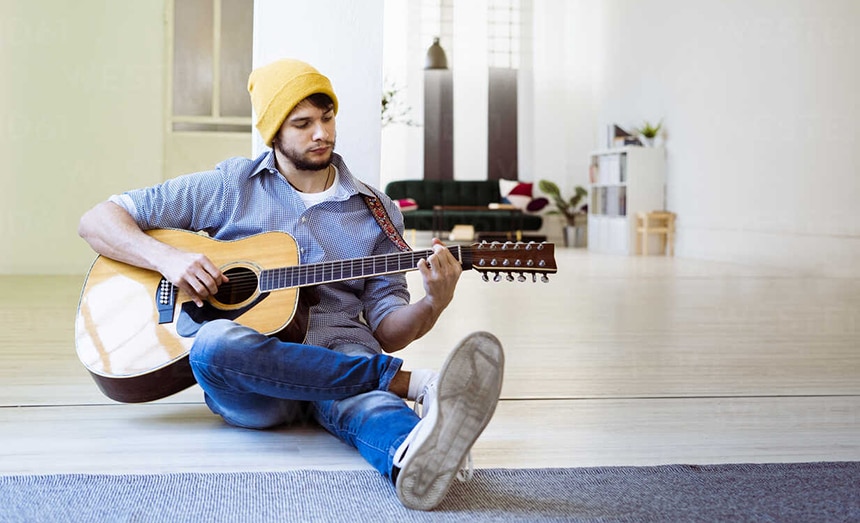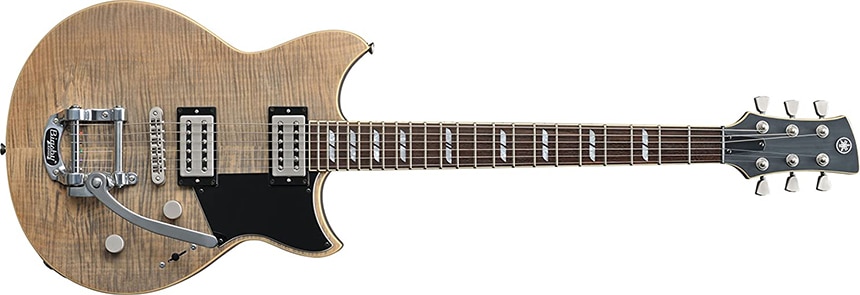Do you want to learn how to play the guitar? Your very first move will be to learn about some of the critical guitar strumming tips because they will set you on the path to becoming a better guitarist.
We are sure you must have listened to some good players in the world. From your observation, they are not only consistent. They also know their way around playing the guitar, and this isn’t something they learned in a day.
Likewise, you can start today to learn and master some of the guitar tips and tricks that will, in no time, make you a great player as well.
Here are some guitar tips we think you will find helpful.
There is hardly a good player out there that didn’t start small. One of the major challenges you will have as an up-and-coming guitarist is that you will continually compare yourself to some of the established players.
Nothing good ever comes easy. Likewise, no good player is made by comparison.
Therefore, you need to take your time to learn the basics and the properties of guitar playing techniques because you will need them as you progress in your career.
What are these proper guitar playing techniques, you may ask? Here are some of them:
It may take you some time. It may also mean that you will have to cut off some things you intend to do just so you can learn how to play the guitar Trusted Source Learn to play guitar | Music | The Guardian Put down the air guitar and pick up the real thing. Here are a few simple things that will help you learn theguardian.com .
But it doesn’t matter much, provided you master some of the tips for learning guitar.
An excellent way to do that is to learn a new trick or tip related to playing the guitar. It could be learning the scale, learning an altered tune, or playing a melody.
Whatever it is, the fact is that you are continually exploring and seeking out new opportunities in your journey to becoming the world’s most acclaimed guitarist.
You don’t necessarily need to delve into mastering advanced guitar chords on your first try.
Instead, you want to take advantage of some beginner-friendly guitar chords that will help you master how to play those chords.
It would also make it easier for you when you get to the stage of playing the major chords.
Finding a note on a fretboard can be one of the hardest things to do, especially when you already have a lot on your mind to put out in sound.
That brings us to the second most important guitar tips and tricks you must know – learning how to find the right note Trusted Source Learn to play guitar online with this easy course | CNN This $29.99 pack of online courses covers all of the basic guitar essentials including chords, techniques and more so you can finally learn how to play guitar. us.cnn.com .
Different players have different theories on how to locate that note that could make all the difference.
Yet, they agree that things should be kept simple, especially for beginners who are looking to carve a niche for themselves.
Of course, a lot of guitarists will express different views on how to make chord shapes. But that’s okay because every player knows what works best for him or her.
Besides, many guitarists believe tackling the chords you find challenging to learn is better, which becomes a mental barrier when you become an active player.
As much as that is understandable, it doesn’t change the fact that you can get around those tricky chord shapes (at least, for now) by simplifying how you play them.
Because chords are the main foundation of what you do on a guitar, you don’t want to miss out on learning them.
What you can do instead is to start practicing scales early so you wouldn’t have much difficulty with synchronizing multiple fingers at once to run through every chord on your Yamaha guitar.
Another thing you want to do is to learn how to play or run through a few chords. It will only be a matter of time before you become conversant with the other chords and start executing chords much faster than you used to.
There will usually be a time when your fingers will become hooked to the fretboard. This usually happens to starters who would occasionally hurt their fingers in the course of pressing the strings against the fretboard.
So, they figure out that hooking their thumb over the top of the fretboard could be a better way to get over the pain.
Well, it’s a bad idea because you will only end up with what is called a “Death Grip”, which happens when you have a fairly fierce grip on your neck. This type of grip on the fretboard can also restrict your fingers from reaching the strings when playing.
You can overcome Death Grip by having your thumb on the back of the top of the guitar’s neck. Doing that can provide you with some reprieve because you will start using more of your fingertips to work on the strings.
At the same time, you may need to constantly practice this until your get used to it and your wrist stops hurting when you play on the strings.

Sitting for many minutes (or hours) in one position when rehearsing how to play the guitar isn’t the perfect idea.
Among the many disadvantages of staying put in one position are:
Instead of staying in the same position for long, consider switching positions. An ideal way to go about it is by alternating between sitting down and standing up.
At intervals, you can also waltz around the room so you can become better acquainted with live performance settings.
Speed doesn’t always mean playing the best notes. Don’t pressurize yourself to learn faster, especially by comparing your learning pace with others.
Rather, you want to take your time, slow down, and master how to hit and finger the right notes at the right time.
One of the best guitar soloing tips is to learn how to play with the correct fingers. This isn’t what many players know, but the few who know it use it to their advantage.
Learning how to use the correct fingering is an art on its own, and many experts have long figured out which is which.
Keep in mind that mastering how to use the correct fingers is not only limited to playing the scales and the chords the right way.
Instead, it is more of knowing when to vary, and when to play the sevenths and the ninths. Also, consider placing your hand in a way that it has easier access to the scales and chords on the fretboard.
We know you are excited to be playing the guitar. And when you get a bit better at it or when you are rehearsing, you will like others to have a feel of what you have to offer.
Or perhaps, you want to play music or hum to the notes you are playing so you can make some personal evaluations.
On the contrary, you can be much more productive when playing your P90 guitar if you can shut out any sound.
Okay, how about some sound? You can use a metronome to play a click track as you get yourself to master some of the beginner guitar tips.
You should, however, not rush this because the primary aim of using a metronome is to become used to playing your guitar at a steady tempo – and in time too.
Therefore, consider regulating how you respond to the rhythm by setting the Beats-per-Minute (BPM) to be very low.
For those looking for a metronome, our experts recommend the KLIQ MetroPitch model that will impress everyone with its functionality.
Like every other thing you want to be good at, playing the guitar requires all the commitments you can devote.
Be disciplined with your practice because it will help you be consistent and remain committed to playing guitar.
You don’t necessarily need to have a beating in mind. The moment your fingers rest on the guitar, you will most likely get unimaginable inspiration that will usher you into a world of sonorous notes.
And if you are finding it difficult to keep to your guitar playing schedule, you may want to get a mobile application that will keep you abreast with your schedule.
You are not a machine or some robot. You are human. And as such, you may likely breakdown if you keep working on straightening those notes without taking some time to rest.
So, consider taking some breaks from playing guitar so you can rest for a while. You may also want to listen to music (preferably blues), so you can enjoy the time you spend when not playing your guitar.

Last but not least – your right-hand needs to do more of the work expected of you as a guitarist that is mastering most of the guitar playing tips.
While learning how to play the guitar is a two-handed thing, your right hand can make it flexible for you to finger-pick and focus on the plectrum style you are learning to play.
To take your music skills to the next level, you should get the proper gear. Thus, you might want to take a closer look at the Yamaha RevStar RS720B guitar that will allow you to progress in no time.
Many new players tend to make some mistakes when playing acoustic or electric guitar the first time. You may have made a couple of mistakes too, but it isn’t the end of the world.
We hope you have gotten some ideas from the spectrum of tips for learning guitar that we just shared.
So, which guitar tips and tricks do you use to become a great player instead of a good one?